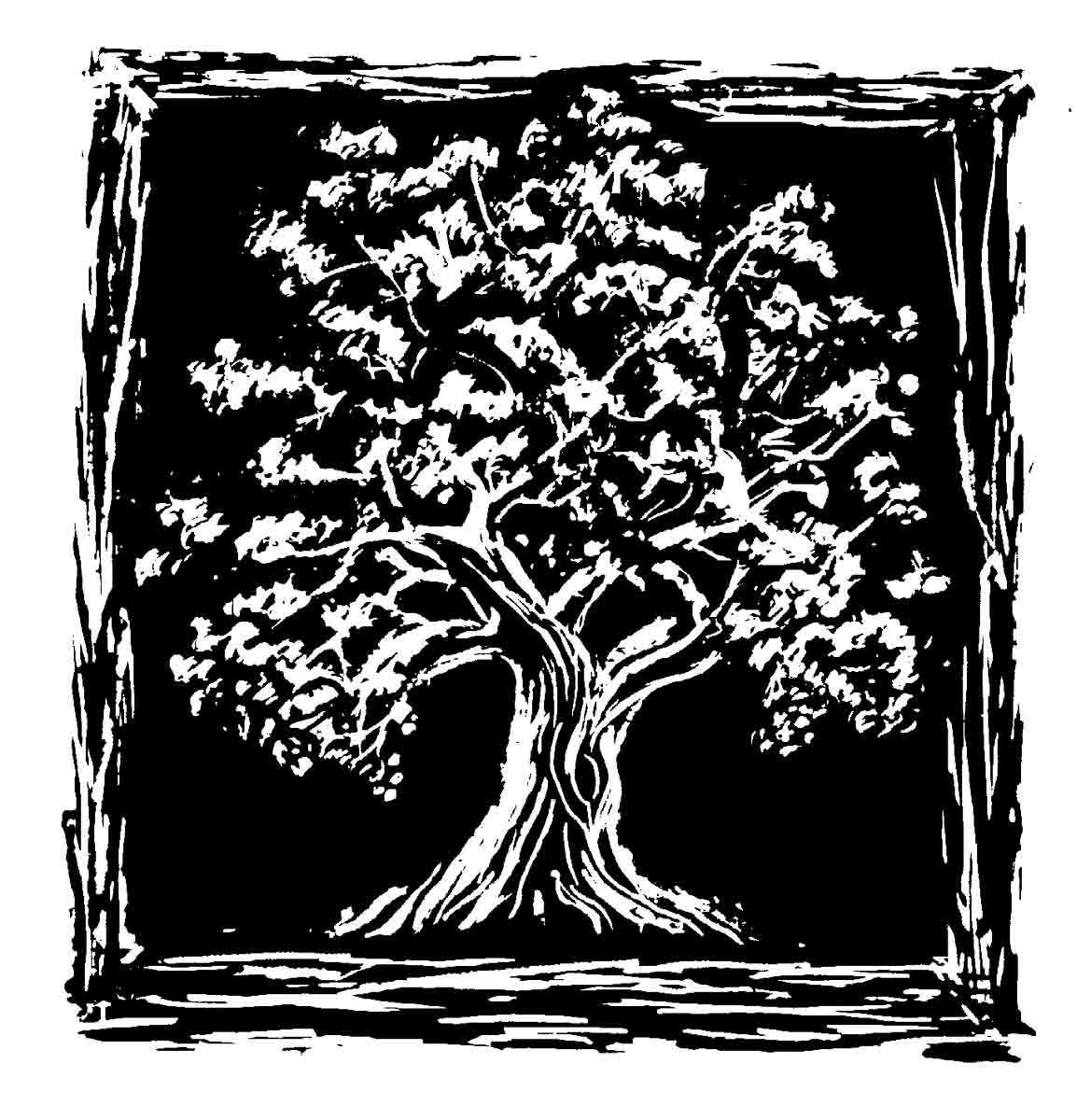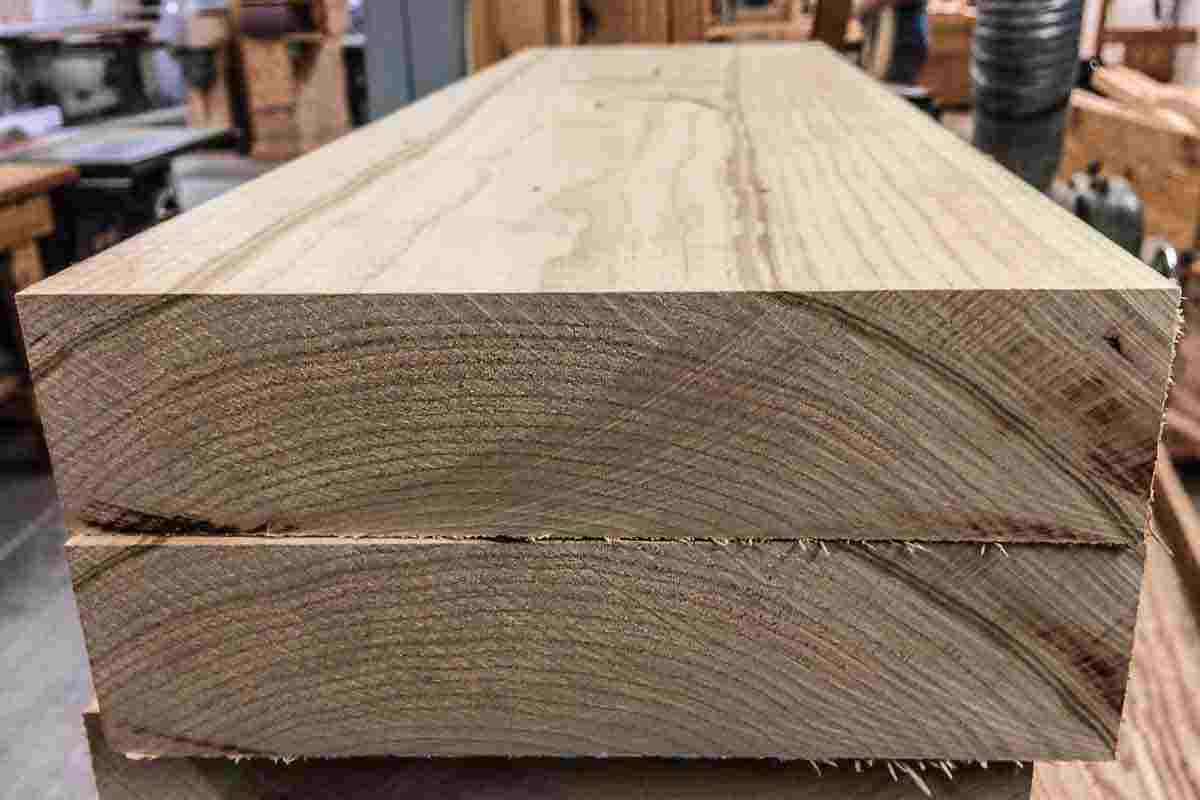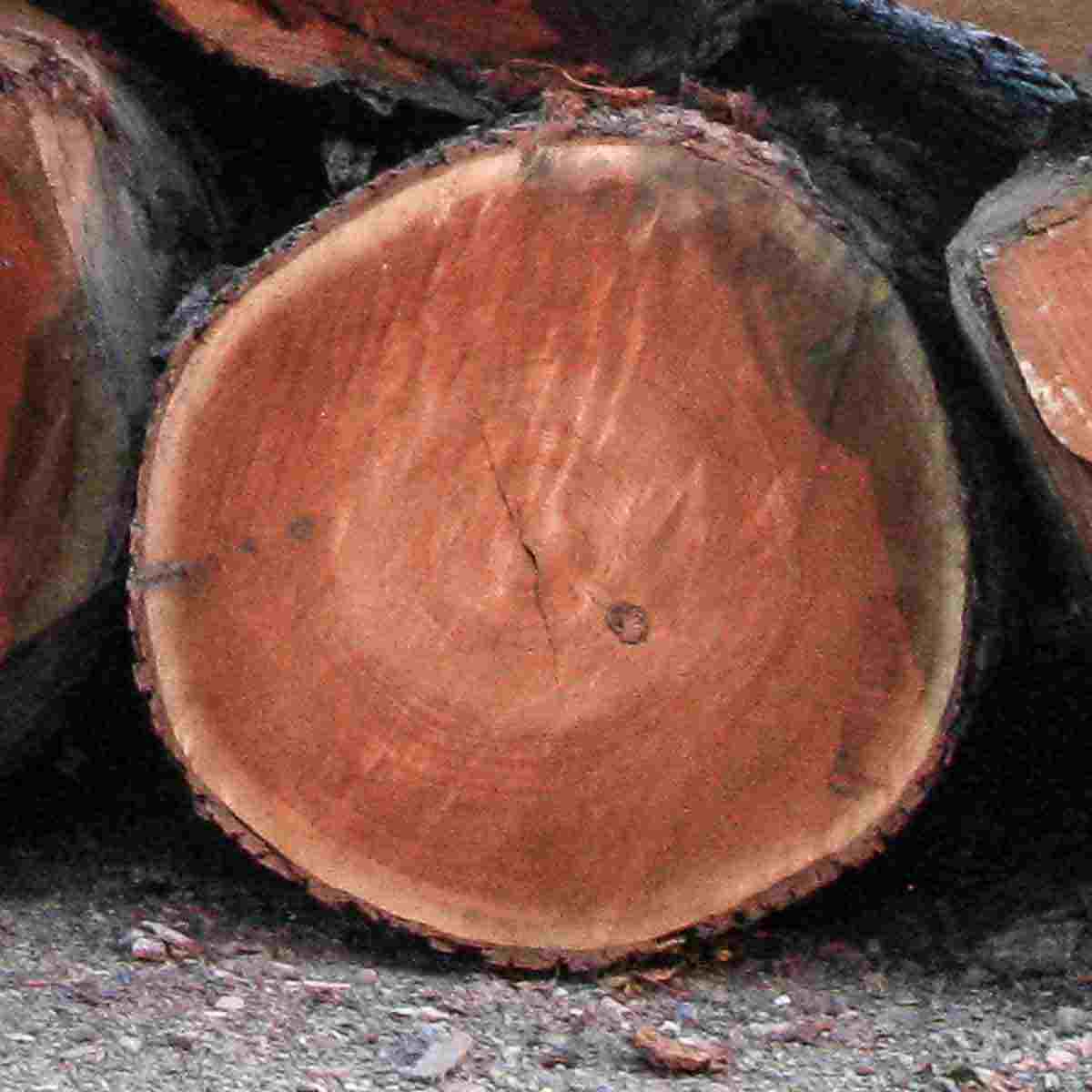Glossary of Wood Terms
Common to all Trees:
Grain, Growth Rings, Heartwood, Sapwood
Common to a Species:
Density, Hardness, Strength, Texture, Stability
Unique to an Individual:
Figure, Color, Character

Characteristics Common to all Trees
Grain
Wood cells form fibers running with the length of the stem or trunk. Although the term is often used and understood otherwise, grain, technically, refers to the direction of these fibers.
Growth Rings
The cells just under the bark are the only growing and dividing cells in the stem or trunk. Fertility, rainfall, sunlight, temperature, competition, and health determine the number of cells and fibers that will be added in a year. These layers of cells and the annual color change that occurs at the end of the growing season form the concentric circles that we count to assign an age to the tree. When we saw along these fibers, the growth rings appear as patterns on the surface--sometimes spectacular patterns.

Sapwood
The living wood just under the bark is creamy white or tan and is called sapwood. The sapwood can be thin, one or two growth rings, or thick, many dozens, generally depending on the species--but conditions can cause significant differences with a species.
This maple log is mostly sapwood.

Heartwood
As the tree grows, the cells nearer the center of the tree die. Minerals accumulate there. These minerals produce color.
This cherry log is mostly heartwood.

Characteristics Shared by a Species
Density
The amount of fiber per unit of volume (the density) is telling--for most species it predicts other characteristics. Density relates to weight, but because wood in use will have some water in its cells and pores, weight is not constant. A more meaningful measure is specific gravity: the ratio of the weight of a given volume of oven dry wood to the weight of the same volume of water. The higher the number the denser the wood. Usually, the denser the wood, the harder and stronger it is, but not always. Usually, the denser the wood, the more it changes in dimension with changes in moisture content, but not always. See Wood and Moisture.
Hardness
The harder the wood the more resistant to denting, wear, and abrasion.
The woods we stock rank from the hardest thus: maple, mesquite, walnut, cherry, and mahogany. All are hard enough for long service.
Strength
The woods we stock rank from the strongest thus: maple, walnut, cherry, mahogany, and mesquite. All are strong enough for resistance to breakage in normal, and heavy, use.
Texture
The physical size and composition of the fiber and vascular channels (pores) determine the texture of wood. If the wood pores are visible, the wood is called "open grain"; if they are not, the wood is called "closed grain." Maple and cherry have closed grain. Walnut, mahogany, and mesquite have open. We sand and polish them all so they delight the hand and eye in their own way.
Stability
When subjected to changing humidity some woods shrink or swell more than others. (See Wood and Moisture) The woods we stock rank thus from the most stable: mesquite, mahogany, cherry, walnut, maple.
Characteristics Unique to Each Tree
Figure
The growth rings apparent on the end of a log are the lines we see on the surface made by sawing or shaping. The plane of the surface intersects the roughly concentric cylinders of growth rings at various angles and orientations. The conic sections revealed may be hyperbolic, parabolic, straight, or any combination, depending on the path chosen by the worker and the peculiarities of the tree. These patterns, commonly called grain, are, more correctly, called figure.

Color
Each species has its characteristic colors of heartwood and sapwood. These colors vary within a species, and various streaks and shades occur within a log.
Character
As they grow, events in nature affect the dividing cells under the bark, resulting in anomalies in grain and in color. For examples, the fibers swirl around limbs and buds, an injury heals, pitch or minerals concentrate--resulting in irregular figure, variable reflectance, iridescence, burls, knots, and dark streaks. When attempting to produce a homogeneous product for a mass market, these natural anomalies are considered defects. We consider them marks of character.